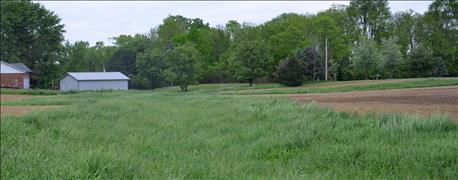
The Natural Resources Conservation Service in Indiana allocated its entire allotment of $15 million for the Environmental Quality Incentives Program for cost-share with farmers and landowners before the end of May. That’s a big increase in demand, despite lower commodity prices.
Indiana Prairie Farmer sat down with Jane Hardisty, Indiana NRCS state conservationist, to discuss the reasons for increased demand, and what you should do if you would still like to request cost-share assistance.
IPF: What is the current state of EQIP funding for Indiana?
Hardisty: We have committed the $15 million that Indiana was granted for the fiscal year. That runs through Sept. 30, 2016. We have $12 million in additional requests that we don’t have money to fund at this time. Once all states have a chance to allocate their funds, remaining allocations that aren’t used are returned to the pool, and states like Indiana that need more money can request more funds. We’ve done so and requested the full $12 million that we need. We should hear if we get additional money very soon.

MORE DEMAND FOR COST-SHARE DOLLARS: Some farmers still want cost-share money to install practices like this grass waterway. Others seek money to try no-till and cover crops.
IPF: High demand for cost-share seems backward when crop prices are low and budgets are tight. What do you think is driving demand for cost-share dollars?
Hardisty: Farmers are buying into the idea that soil health is important. They are seeing neighbors and others make cover crops and other practices work, and they’re wanting to try it themselves. We’ve done a good job of getting that message out, and this big increase in demand for cover crop funds is an indication that our messaging is working.
IPF: Do other things contribute to the big increase in demand for cost-share funds?
Hardisty: What we’re seeing are more people requesting cost-share for a suite of conservation practices rather than just for one or two practices. For example, if they’re concerned about soil health, they may be requesting for no-till, cover crops and related practices. It’s based on good conservation planning.
IPF: Since you don’t have any money left at this time for EQIP cost-share, should farmers keep signing up for the program?
Hardisty: Yes, definitely. There are a couple of reasons. You want to be on the list in case we do get additional funding. If and when more funding becomes available for this fiscal year, all requests will be evaluated again based on perceived environmental benefit if that particular cost-share request is granted. If your request scores higher on the index system, meaning there is greater need or increased chance to show benefit for money invested vs. other requests we already have, your request should be funded.
Second, our fiscal year starts over Oct. 1. We would anticipate having a new batch of EQIP dollars to allocate at that time. If you have already worked with FSA [Farm Service Agency] and NRCS staff and have your paperwork in order, you will be that much farther ahead when the next round of allocation begins.
IPF: Are there other opportunities for funding for cost-share if your EQIP contract isn’t approved?
Hardisty: Yes. You need to investigate the possibilities with your local FSA office. In some cases, local soil and water conservation districts may also have cost-share money available to try cover crops or other practices. And if you want to try these practices and there just isn’t a cost-share program that fits, you may have to pick up the costs yourself to get started into cover crops or no-till.
About the Author(s)
You May Also Like




